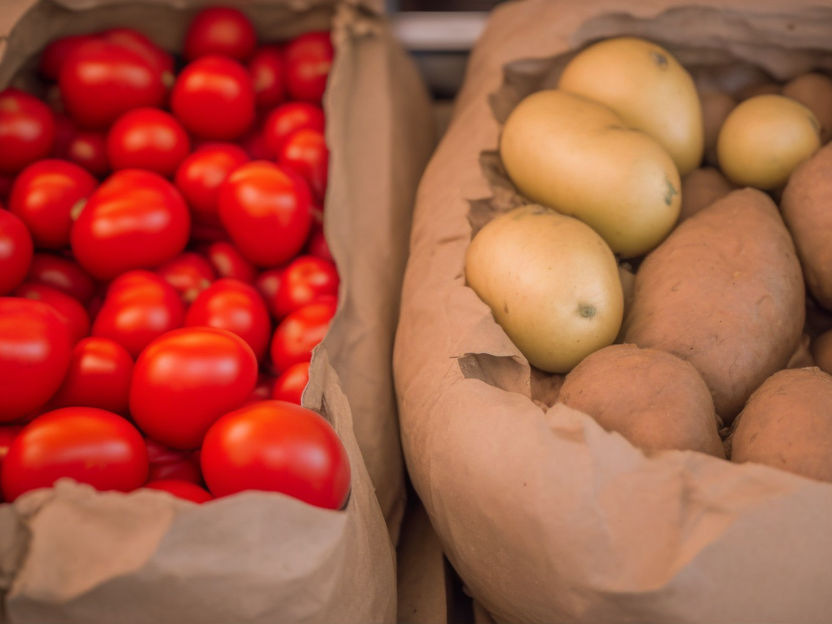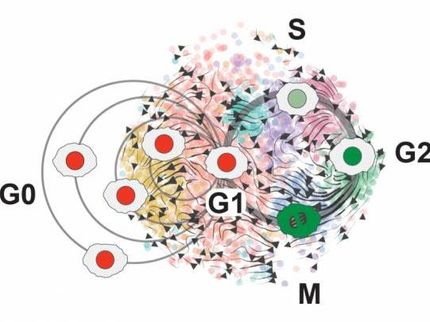Could new cancer drugs come from potatoes and tomatoes?
Future cancer drugs may one day be formulated from glycoalkaloids found in plants from the genus Solanum
Everyone knows someone who has had cancer. In 2020, around 19m new cases — and around 10m deaths — were registered worldwide. Treatments are improving all the time but can damage healthy cells or have severe side-effects which are hard on patients; in the search for new, more targeted cancer drugs, traditional medicine offers many possible candidates. A team of Polish scientists led by Magdalena Winkiel at Adam Mickiewicz University, publishing today in Frontiers in Pharmacology, reviewed the bioactive compounds called glycolalkaloids that are found in many vegetables that are household names, like potatoes and tomatoes, to demonstrate their potential to treat cancer.

Computer generated picture
“Scientists around the world are still searching for the drugs which will be lethal to cancer cells but at the same time safe for healthy cells,” said Winkiel. “It is not easy despite the advances in medicine and powerful development of modern treatment techniques. That is why it might be worth going back to medicinal plants that were used years ago with success in the treatment of various ailments. I believe that it is worth re-examining their properties and perhaps rediscovering their potential.”
Making medicine from poison
Winkiel and her colleagues focused on five glycoalkaloids – solanine, chaconine, solasonine, solamargine and tomatine – which are found in crude extracts of the Solanaceae family of plants, also known as nightshades. This family contains many popular food plants – and many that are toxic, frequently because of the alkaloids they produce as a defense against animals that eat plants. But the correct dose can turn a poison into a medicine: once scientists have found a safe therapeutic dose for alkaloids, they can be powerful clinical tools.
Glycoalkaloids in particular inhibit cancer cell growth and may promote cancer cell death. These are key target areas for controlling cancer and improving patient prognoses, so have huge potential for future treatments. In silico studies — an important first step —suggest that the glycoalkaloids aren’t toxic and don’t risk damaging DNA or causing future tumors, although there may be some effects on the reproductive system.
“Even if we cannot replace anticancer drugs that are used nowadays, maybe combined therapy will increase the effectiveness of this treatment,” Winkiel suggested. “There are many questions, but without detailed knowledge of the properties of glycoalkaloids, we will not be able to find out.”
From tomatoes to treatments
One necessary step forward is using in vitro and model animal studies, to determine which glycoalkaloids are safe and promising enough to test in humans. Winkiel and her colleagues highlight glycoalkaloids derived from potatoes, like solanine and chaconine - although the levels of these present in potatoes depend on the cultivar of potato and the light and temperature conditions the potatoes are exposed to. Solanine stops some potentially carcinogenic chemicals from transforming into carcinogens in the body and inhibits metastasis. Studies on a particular type of leukemia cells also showed that at therapeutic doses, solanine kills them. Chaconine has anti-inflammatory properties, with the potential to treat sepsis.
Meanwhile, solamargine — which is mostly found in aubergines — stops liver cancer cells from reproducing. Solamargine is one of several glycoalkaloids that could be crucial as a complementary treatment, because it targets cancer stem cells which are thought to play a significant role in cancer drug resistance. Solasonine, which is found in several plants from the nightshade family, is also thought to attack cancer stem cells by targeting the same pathway. Even tomatoes offer potential for future medicine, with tomatine supporting the body’s regulation of the cell cycle so that it can kill cancer cells.
Further research will be needed to determine how this in vitro potential can best be turned into practical medicine, Winkiel and her team noted. There is some reason to believe that high temperature processing improves glycoalkaloid properties, and nanoparticles have recently been found to improve transmission of glycoalkaloids to cancer cells, boosting drug delivery. However, the glycoalkaloids’ mechanisms of action need to be better understood, and all potential safety concerns need to be scrutinized, before patients can benefit from cancer drugs straight out of the vegetable patch.























































